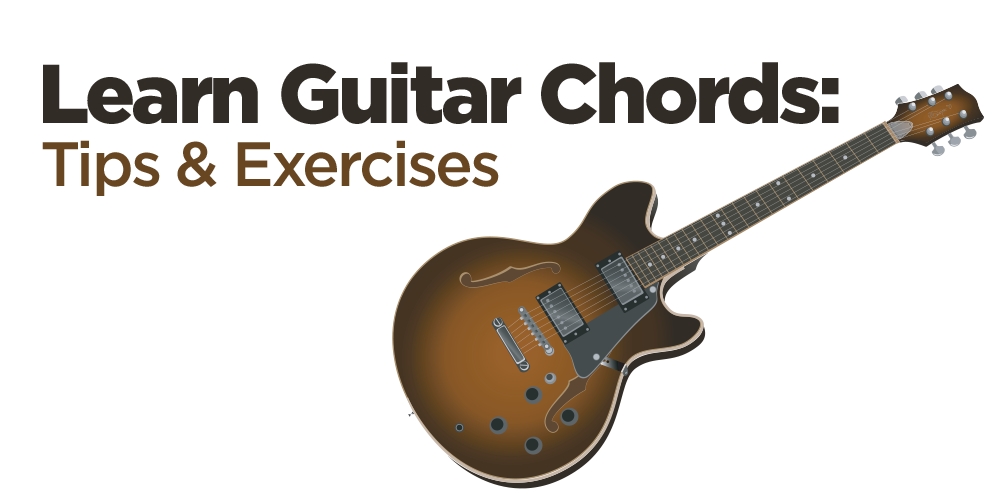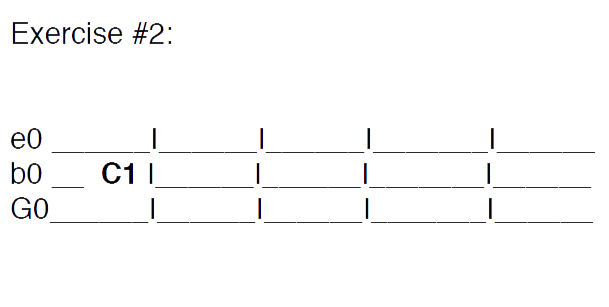FREE LESSON
PHIL KEAGGY - Grammy nominated and seven-time Dove Award winner, is one of the world’s great guitar players and a pioneer in contemporary Christian music.

First things first, assuming you have a good guitar that has six strings and stays in tune, you’re ready for action. Why is this important? You need a guitar that plays easy and stays in tune so there will be no obstacle in your way on the practical side of things. If the guitar doesn’t play well, your fingers will hurt and you’ll find it hard to hold down the notes. If the guitar won’t hold tune, you’ll hear an out of tune chord and cringe every time you strum. These things will make or break you in the beginning. To learn guitar chords, there are a few things that you must do well. Let’s see if we can help.
Many underestimate the value of finger exercises. When you play guitar, whether you’re holding down chords or playing a melody, you’re asking your hands to do things they’re simply not used to doing with precision. You might use your pinky finger to clean out your ear or something else, but rarely do you ask it to hold something down with an exact amount of tension. One mistake self-taught guitarists make is not using all five fingers on the left, or chording, hand. Some ignore the little finger and of course that limits the possibilities.
When you want to learn guitar chords, it always helps to have some homework to train yourself. Here are a few finger exercises to help with building strength and integrity in your chording hand:

Start with the big E string and put your 1st finger on the 1st fret. Strike that single E string down with the pick. Then move your 2nd finger on that same string on the 2nd fret and pluck upward with the pick. Then the 3rd finger on the 3rd fret and then the 4th. Do each string the same way all the way down to the 1st or little e string, then work your way back to the big E string. Remember to go down with the pick one note and up the next. This is very important. When you have conquered this one, then alternate the order of fingers: try 2341, 3412, 4123 etc. This will help you learn guitar chords in the future.
If you’re a beginner, you may find it overwhelming to reach the full chords and make them come out clearly. As you learn guitar chords for the first time, there are some simple one-finger chords to help you gain confidence. Since you’ll only be using one finger, you’ll also only be striking three strings with the pick. We’re going to focus on the first three strings only, so don’t bother with the three lowest strings. Let’s get started.

Put your index or 1st finger on the 2nd string and 1st fret. Make sure your finger is close to the edge of the fret and not in the middle. Also, make sure you're on the tip of the finger and your skin isn’t touching any other string. Stand your finger up on the tip and strum the 1st three strings with your pick. Again, only the 1st three strings. What you have is a C Major triad, or chord. Start by just strumming these three notes four beats at a time. Follow this chart below:
II: C / / / / C / / / / C / / / / C / / / / :II
Practice this until you are confident all the notes are clearly heard. You don’t want any dead notes or buzzes. Once you have this one mastered, drop your 1st finger down to the 1st string and 1st fret and strum the same three strings. This is a G7 chord.

Now strum this G7 chord until all the notes are good and clear. Here’s a simple four-beat chart to show you the counts:
II: G7 / / / / G7 / / / / G7 / / / / G7 / / / / :II
Don’t be confused about why you’re holding an F note and yet the chord is called G7. The single note is different than the three-note chord. In this case, the single note is called F1, but when you put b0 and G0 with it, it becomes a G7 triad. You wouldn’t consider this melody, but harmony.
Once you’ve mastered C and G7 and they sound clear to you, you’re now ready to start alternating them. Let’s try the progressing below. You’ll strum only the first three strings starting with C, then moving to G7.
II: C / / / / C / / / / G7 / / / / C / / / / C / / / / C / / / / G7 / / / / C / / / / :II
What you have here is “Mary Had A Little Lamb.” You can strum and sing along if it helps.
C / / / / C / / / / G7 / / / / C / / / /
Ma- ry had a lit- tle lamb… lit-tle lamb… lit-tle lamb…
C / / / / C / / / / G7 / / / / C / / / /
Ma- ry had a lit- tle lamb whose fleece was white as snow…
Once you master the three-string version of “Mary Had a Little Lamb,” you’re ready for the full chords. This will sound much fuller and more pleasant to your ears when you get it right. Our C Major chord is simply made up of C, E, and G. In the next diagram, you’ll see we’ve added more C, E, and Gs and you can also strum more strings. Check it out:

Here you have an e0, C1, G0, E2, and C3. Make sure you use the correct fingers. 1st finger for C1, 2nd finger for E2, and 3rd finger for C3. G is an open note. You won’t strum the big E string even though it is an E note. Avoid hitting it for now as it only clouds the chord. We’ll use it later.
Now, let’s look at the G7 chord. It looks a lot like C except, we’re going to stretch out the fingers and use all the strings. This one we’ll nickname “the big stretch.” It will put your fingers to the test.

In G7 you have an F1, b0, G0, D0, B2, and big G3. These notes make up the G7 chord.
On this chord, strum all six strings. Try not to lay your fingers down. Keep your thumb pressed against the back of the neck and your wrist down. Stay up on your finger tips and strike each string till it’s clear.
Once you can play these two chords clearly, go back and try “Mary Had A Little Lamb” again using the full chords. You’re on your way! You can strum these same two chords and play songs like “Down In the Valley” or “He’s Got the Whole World In His Hands.” Have fun and don’t give up. As you continue to learn guitar chords, it gets easier. Pick up a chord book or grab some basic chords from an online source like Pro Lessons.
Here at Pro Lessons, we want to be a resource for guitarists of all shapes and sizes. With our experienced instructors and affordable rates, you’ve got nothing to lose. Find out how you can be our next student by clicking on the link below.